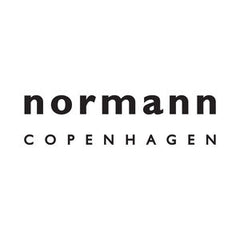normann copenhagen | timber trivet
normann copenhagen | timber trivet
Dimensions: 18 x 20 x 3cm thick
Material: oak
- ready to ship
A classic shape, with pure expression. Timber is a stylish and practical trivet with a beautifully designed finish by Adam Goodrum. Timber trivets are made of natural materials, and are useful both in the kitchen and for laying the table with.
Australian Goodrum has used play as his reference point. With strong references to classic wooden toys, Timber is also playful in its shape and constitutes a graphic pattern through a pure and honest mode of expression. There are no unnecessary details.
Adam Goodrum explains:"My wish was to design a sculptural trivet. I adopted a playful approach to come up with the mode of expression. Just like a puzzle where the pieces must be fitted together. The conical shaping constitutes an elegant gathering of the object."
Timber trivets are perfect for protecting the table from hot saucepans and dishes in a decorative way.

Click for more ideas from BRAND | Normann Copenhagen
Jan Anderson and Poul Madsen teamed up to create the Normann Copenhagen brand in 1999 with a vision to make a difference in the design industry. Three years later they launched the first product, the lamp Norm 69. Within five years more than 38 products followed, as well as collaborations with established design names and new talent from around the world.
In 2005, Jan and Poul moved from a small design store at Strandboulevarden to an old 1700m2 cinema at Osterbro in Copenhagen. They were determined to create a unique retail environment that would add something new and exciting to Copenhagen. Today the store has not only won several prizes as the coolest design store in Copenhagen, but also serves as a platform for great parties, fashion events, art exhibitions as well as small happenings. Normann Copenhagen loves to challenge the conventional design rules. This is why you will find traditional materials put into untraditional use such as a washing-up bowl in rubber, a vase made out of Silicon and last but not least a dog made out of plastic. Normann Copenhagen is a way of living - a mindset, a way to view the world in a new and different way.
 Click for more ideas from Adam Goodrum (designer)
Click for more ideas from Adam Goodrum (designer)After completing a degree in Industrial Design at UTS, Sydney based Goodrum went on to receive a Bombay Sapphire Design Discovery Award in 2005 for his Eve chair, and continues to create practical, well resolved and humorous products. Adam Goodrum shot to fame after years of work on the now iconic "stitch chair" for Cappelini which went into production in 2008. Goodrum has recently been invited to judge a student competition at the Kortrijk XPO, an annual furniture exhibition in Belgium.
We asked Adam 3 Questions we were keen to hear his thoughts on:
1. Tell us about your designs and the process involved? How do your designs usually come about?
I find it difficult to describe my own work, but with any project I endeavour to add a personality or an added function to any object I’m designing. Throughout my work, a product has to justify its existence. With some of my more artistic projects I love to include an element of surprise and have always had a fascination with bold colour.
I’m fortunate enough to work with companies who share a common philosophy and methodology. They execute at a high level, using good materials and considered craftsmanship to create products that will last a lifetime. This kind of thinking is involved in my designs from conception to production.
In regards to my creative process I’m always working on a number of different projects so find myself thinking about them 24/7. I’m constantly looking for little details that could inspire or develop an idea - exploring making processes, noting clever detail in existing objects, and observing people and how they interact with they surroundings. Some of my works take a long time to develop, continually returning to them to adjust proportions or refine a certain aspect.
2. How do you feel about the replica industry (in Australia) and how has it affected your designs?
The replica industry is having detrimental effects on design in Australia and many designers, myself included, have been working to push for a legislative change to put a stop to it. Here replicas are not understood for what they are - fakes, and in turn, they are being perceived as merely cheaper versions of well known designs. Ultimately this is devaluing design in Australia, pushing out locally designed and made products and have had countless hours dedicated to their conception and development, replacing them with poorly made rip offs. I first hand have had my pieces copied and it is nothing but a theft of someone else’s work
Because of this lack of protection our designs, other measures have to be taken to protect our IP. With my Molloy chair, it has been designed so that it is very complex to CNC - therefore making the components hard to replicate. This means however, that the end product is an expensive chair, having to factor in the extensive development and production time. Secondly, whilst we could invest in larger scale production to bring the cost down, making Australian design accessible as it should be, registered designs are only ‘protected’ for 10 years, giving no incentive for long term investment.
3. What are your hopes for the future of design in Australia?
Over the past few years I have noticed that Australia’s design scene has been maturing; a multitude of small design practices emerging, born out of a new appreciation of design. This appreciation has permeated communities on both a private and commercial level, encouraging exploration of what design means to us and our culture. Coming from a previous period where Australian design was somewhat devalued and European held superior, I am excited to see a renewed proudness in our furniture and products.
While it is early days, I hope to see these changes inspire resourceful young designers to develop a culturally unique aesthetic, engage with communities and push our perceived limitations of design.
Warranty: 2 years
- Free delivery australia-wide (does not apply to bulky products) Top3 members receive free standard delivery Australia-wide for orders over $100
- ready to ship
















